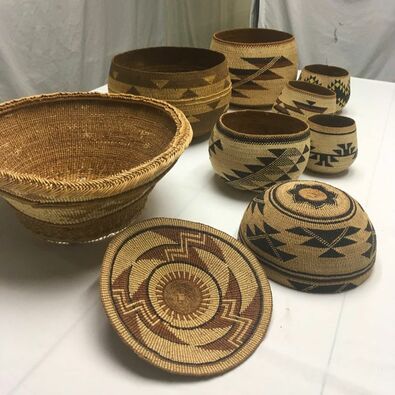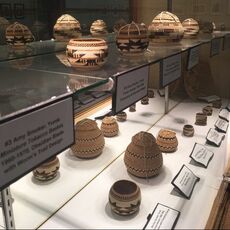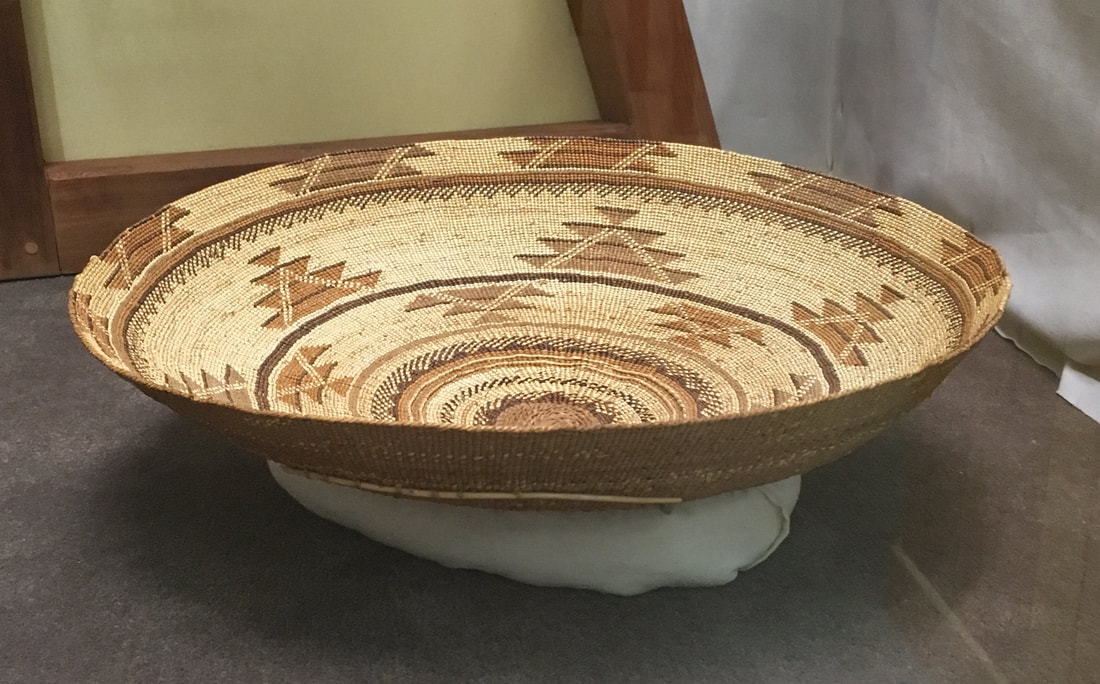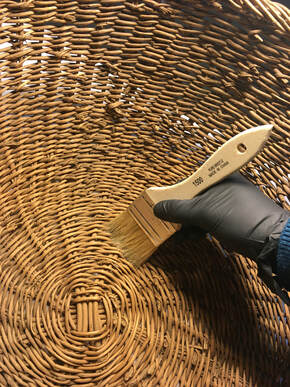 Selection of baskets in storage in Nealis Hall, Clarke Historical Museum.
Selection of baskets in storage in Nealis Hall, Clarke Historical Museum. So a new basket has come into your home, or you have an extensive collection but just are not sure if you are storing things correctly? Here are some simple tips and check ins that you can do with your collection.
The basics come down to handling, storage, and when warranted how to clean your baskets.
When handling other artwork or antique items it is best to understand what vulnerabilities are at play in the structure of the object. When picking up the basket or other object do so with both hands and never grasp by the rim or trust handles to carry the weight of the basket. In some Indigenous traditional world views it is best seen to handle baskets with bare hands as skin contact is important to the life of some items. You can choose to wear gloves like we do at the museum (nitrile is preferred), or the next best bet is to have clean washed hands.
 Hailstone basket collection on display at the Clarke Historical Museum.
Hailstone basket collection on display at the Clarke Historical Museum. | Best storage guidelines are to avoid extremes and fluctuations. Thinking this way, storage locations near stoves/heater vents, windows, doorways, etc. are problematic. Best case is to choose a storage space away from light sources, be well ventilated, and have relatively stable temperatures. Supporting the basket in a way that it won't slump or be misshapen over time is always a best bet. This can be done by making a donut shape from unbleached cotton for a basket to rest on, like this tray is displayed. Refrain from stacking baskets inside one another, as this can also cause warping of your baskets over time. |
| Mistakes or poor storage happens to the best of us. This can lead to dust and situations that warrant a basket being cleaned. For simple dusting, or removing accretion of material on a basket, gentle is best. When cleaning baskets, never use water as this can cause a myriad of issues such as warping of the basket as it dries to promotion of mold growth. Best method is to use a low-suction vacuum and a natural hair bristle brush. Gently clean the basket by brushing the basket using up-sweeping strokes. A vacuum attachment kit made for cleaning keyboards, or other small spaces, is especially helpful here. You will then direct a low-suction vacuum near where you are brushing to collect the dust. Start from the top to the bottom and don't forget the inside or bottom of the basket. |
In the coming year, the Clarke Museum is planning to hold a hands-on workshop for visitors to bring their baskets to learn basic at home care for their collections. Keep an eye out for announcements for this opportunity!



 RSS Feed
RSS Feed